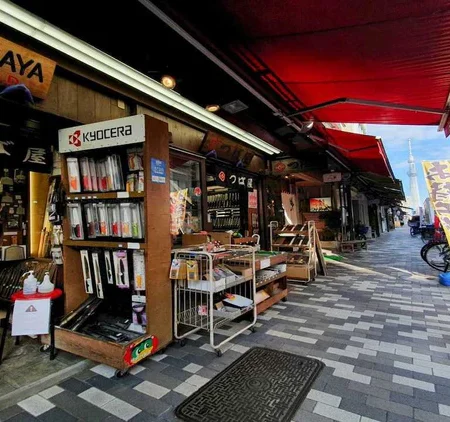1. All-puepose Knife
Santoku, Bunka or Gyuto

Overview:
All-purpose knife is the most versatile tool in any kitchen. It's the go-to knife for most cooking tasks, and for a good reason. With a broad, tapered blade, it can handle everything from chopping vegetables to slicing meat.
Uses:
General use: Suitable for most kitchen tasks.
Chopping vegetables: The broad blade makes it easy to chop large quantities of vegetables quickly.
Cutting meat: Its length and width allow for smooth cutting of various meats.
Dicing and mincing: The curved edge facilitates a rocking motion, ideal for dicing and mincing herbs and garlic.
Why it's number one:
A all-purpose knife, particularly Santoku, Bunka or Gyuto is essential for its versatility and efficiency. Whether you choose a Japanese-style Santoku or Bunka with a flatter edge or a Western-style Gyuto with a more pronounced curve, this knife will be your most-used kitchen tool. For home use, an 16.5 to 21 cm blade is ideal, providing a balance between control and cutting power.
2. Small knife
Paring Knife or Petty Knife

Overview:
Paring and petty knives are small and precise, making them perfect for detailed work. Paring knives typically have a straight, sharp blade, while petty knives are slightly larger and offer more versatility.
Uses:
Peeling fruits and vegetables: Perfect for removing skins with precision.
Detailed work: Ideal for intricate tasks like deveining shrimp or hulling strawberries.
Trimming: Useful for trimming excess fat from meat or cutting away small imperfections in produce.
Why it's number two:
A paring or petty knife is indispensable for tasks that require precision. While a chef's knife handles the bulk of your cutting, a paring or petty knife excels at finer details. Their small size makes them easy to control, ensuring clean, precise cuts.
3. Sujihiki
Slicing Knife

Overview:
Slicing knives have long, thin blades designed for slicing cooked meats and roasts. They are typically 21 to 33 cm long, providing the length needed for clean, even slices.
Uses:
Carving: Ideal for carving large cuts of meat.
Thin slicing: Great for creating thin, uniform slices.
Slicing roasts: Perfect for slicing cooked meats like roasts, ham, and turkey.
Why it's number three:
A slicing knife is crucial for presenting your culinary creations beautifully. While not as versatile as a chef's knife, its ability to create thin, uniform slices makes it essential for serving meats, sashimi and roasts. If you frequently prepare and serve larger cuts of meat, a slicing knife is a must-have.
4. Nakiri
Vegetable Knife

Overview:
Nakiri knives are traditional Japanese vegetable knives with a rectangular blade. They have a straight edge, making them ideal for chopping vegetables.
Uses:
Vegetable chopping: Perfect for cutting and chopping all kinds of vegetables.
Slicing: Effective for creating uniform vegetable slices.
Dicing: Great for dicing vegetables
Why it's number four:
For those who love cooking with fresh produce, a Nakiri knife is indispensable. Its straight edge and rectangular shape allow for precise, consistent cuts, making it perfect for vegetables. its specialization makes it an excellent addition to any kitchen focused on vegetable-based dishes.
5. Bread Knife

Overview:
Bread knives are characterized by their long, serrated blade, typically around 20 to 25 cm. They are designed to cut through bread without crushing it.
Uses:
Cutting bread: Easily slices through both crusty and soft bread without compressing it.
Cakes: Ideal for leveling and cutting through delicate cake layers.
Tomatoes and citrus fruits: The serrated edge makes it effective for slicing through tough skins.
Why it's number five:
A bread knife is essential for anyone who bakes or enjoys fresh bread. Its serrated blade allows it to slice through bread without crushing it, making it invaluable for maintaining the integrity of your baked goods. While not as versatile as other knives, its specialized use is irreplaceable.

In conclusion, these top five knives offer a balance of versatility, precision, and specialization. Starting with a chef's knife ensures you have a reliable tool for most tasks, while the paring or petty knife and slicing knife add precision and presentation capabilities. A Nakiri knife enhances your ability to handle vegetables, and a bread knife completes your collection for perfect slices of bread. Whether you're a beginner or an experienced cook, these knives will significantly enhance your culinary skills and efficiency in the kitchen.




















